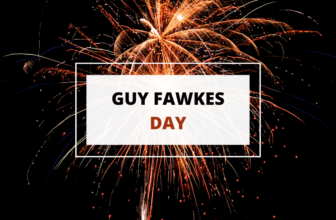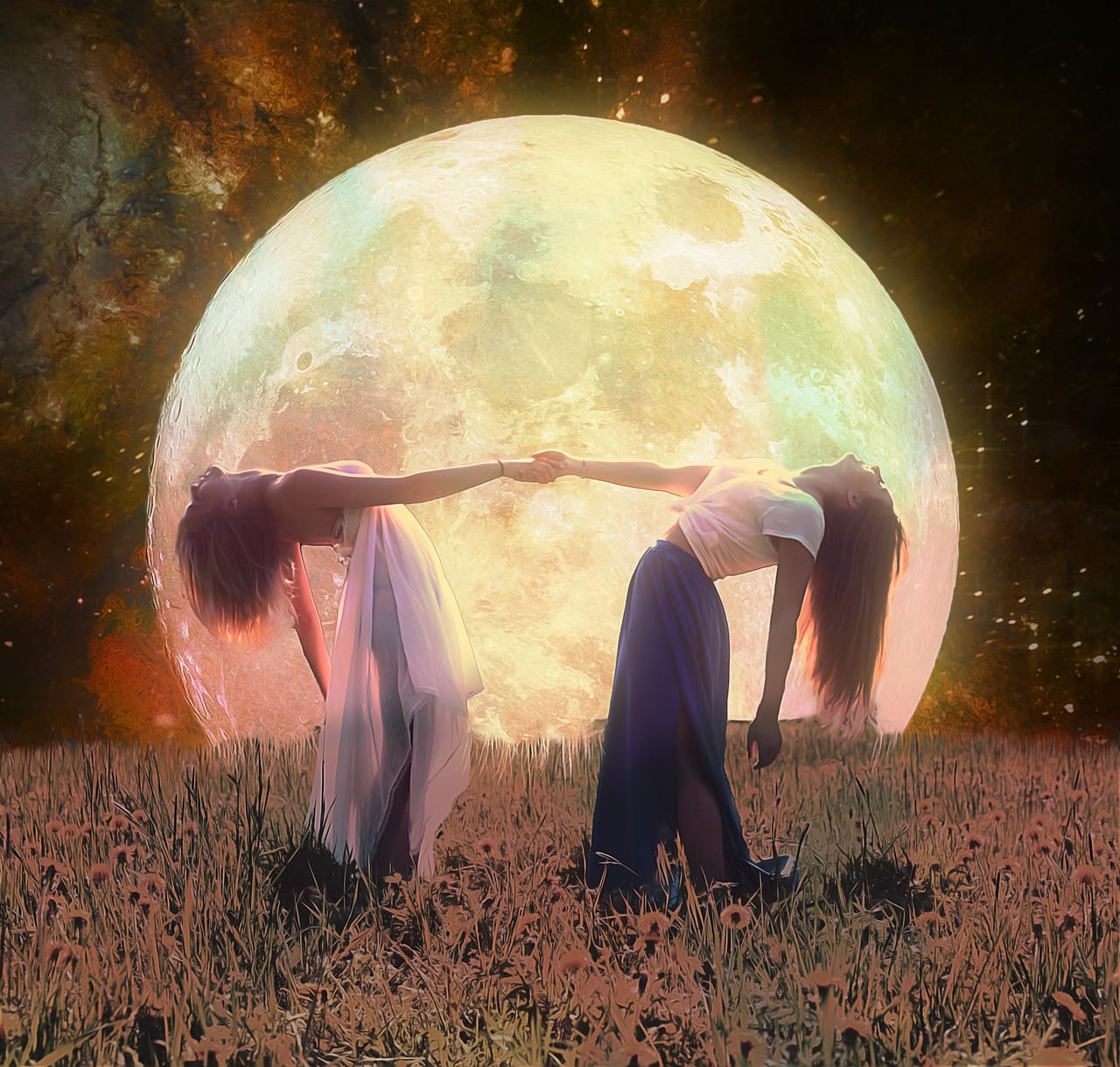
Table of Contents
The full moon is one of the most potent symbols in most mythologies and spiritual philosophies, both in history and today. So, it’s hardly surprising that people throughout the ages have practiced all kinds of different full moon rituals to try and appease the spiritual powers emanating from the celestial body and help steer their own lives in better directions.
If you’re interested in the hidden spirituality behind the full moon and what you can do to best utilize it in your life, here we’ll take a look at what exactly the full moon represents and 8 of the most common full moon rituals.
What are Full Moon Rituals?
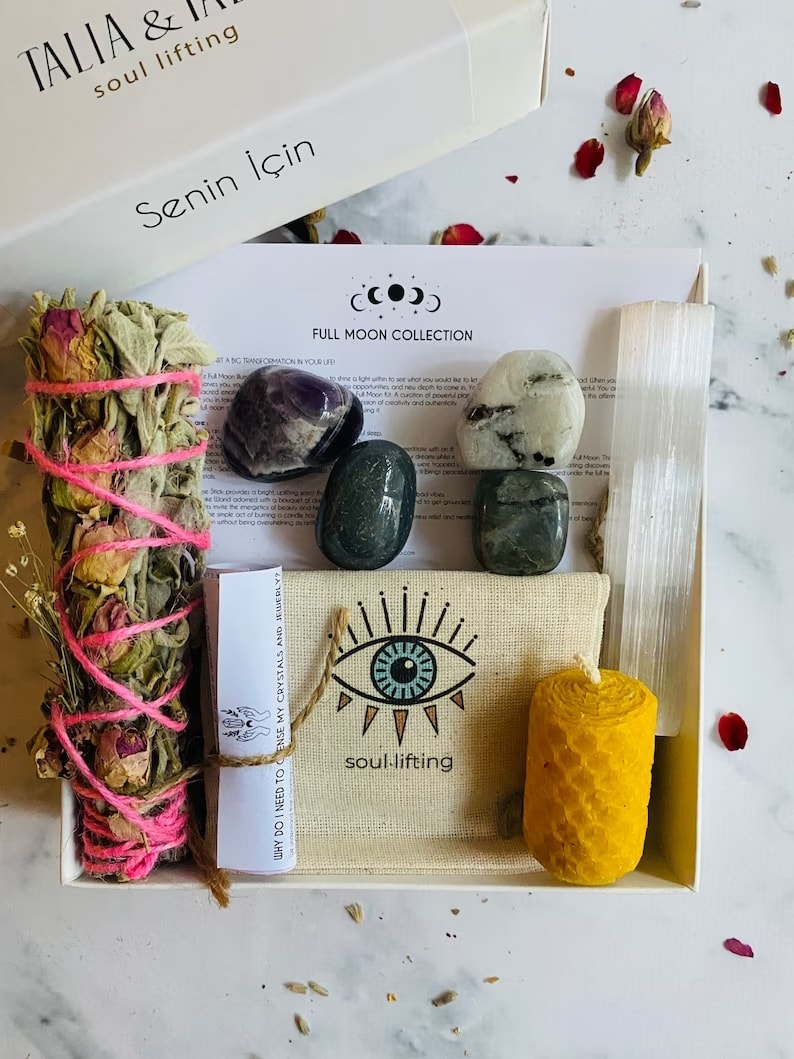
Both astrology and many of humanity’s religions and spiritual traditions mention the effects of the full moon on people’s lives. Many still argue on whether those effects are due to the gravitational effect this celestial body has over water on Earth (and inside our bodies), whether it’s due to something more metaphysical, or whether it’s entirely psychological.
Regardless, a full moon ritual is meant for both:
- Prepare yourself spiritually and physically for the event itself and for the waning moon period
- Connect you to the moon’s spiritual side and attempt to manifest your needs and desires into the world
But why are we talking about a full moon specifically, and what are the waning and waxing moon periods?
Full Moon Rituals vs. New Moon Phases
The full moon and new moon phases are the two most crucial parts of the 29-day moon cycle. The new moon phase immediately follows the moon’s exit from the Earth’s shadow – that’s when the moon crescent is thinnest and starts to slowly grow with each coming night.
On the contrary, the full moon takes place about two weeks later when the moon has grown to its full size and is finally and fully out of the Earth’s shadow. This phase is considered to be the peak of the moon’s spiritual energies and power.
At the same time, however, it’s also the final point of the moon’s growth – from there, it starts to wane more and more each night until it enters its next new moon phase.
Waning Moon vs. Waxing Moon Periods
The waning and waxing moon periods follow the full moon and new moon phases respectively. The waxing period is one of growth and a gathering of strength.
Contrary to that, the waning period is typically associated with the slow or expenditure loss of power and energy. This doesn’t necessarily have a negative connotation as energy is meant to be expended.
It’s important, however, to do that properly which is also where full moon rituals come in – they help us both get the most out of the moon’s peak of spiritual power and prepare for the waning period as best as we can.
Full Moon Rituals Throughout History
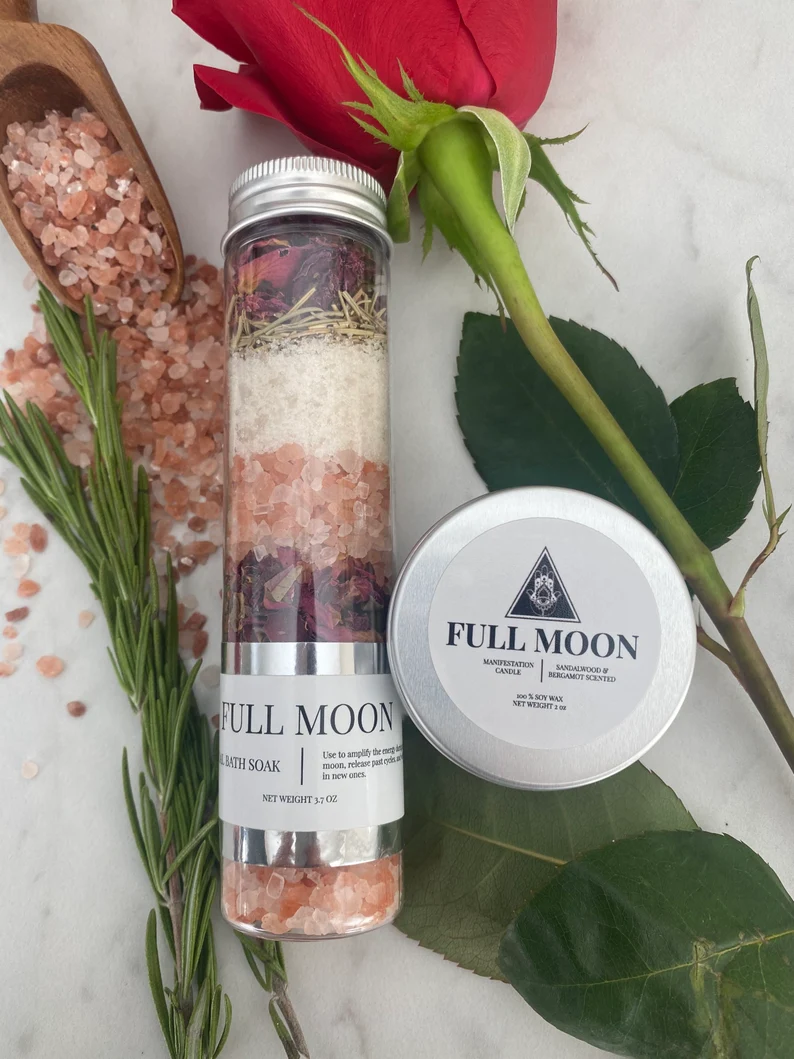
Virtually every human civilization and culture throughout history that we know of has seen the moon as special, has worshiped it, and has tried to utilize its power as best as possible. The moon cycle was often associated with the life cycle of people and many lunar deities were seen as beings that repeatedly and cyclicly grow old and then turn young again.
1. Full Moon Rituals in Ancient Egypt
The moon in ancient Egypt was seen as a symbol of rejuvenation which also made it a key participant in funerary rights because of the Egyptians’ view of death as a part of a continuous life/death cycle. “Young as the moon” is a phrase often used for many young pharaohs, for example, as they were also worshipped as demigods.
As Egyptian mythology is actually a mix of several different pantheons that have risen and intermingled throughout the ages, there are multiple moon deities to look at. Interestingly enough, many of them, such as the scribe god Thoth and god of youth Khonsu, was male even though most religions and cultures worldwide associate the moon with the feminine.
2. Full Moon Rituals in Ancient Babylon
The moon was similarly worshipped in ancient Babylon as was astral magic in general. It’s not surprising that Babylon’s “astral science” and star-reading are seen by many as the origin point of modern astrology too.
For the ancient Babylonians, the moon was a god called Nanna (in Sumer) or Sin (in Akkad). This moon god ruled the sky together with the sun god Utu and the five-planet deities Šiḫṭu (Mercury), Dilbat (Venus), Ṣalbatānu (Mars), and White Star (Jupiter).
The Babylonian moon god was often depicted as a bull because the moon’s early waxing and late waning crescents look like the horns of a bull. So, the Babylonians saw the moon god as a cowherd deity but also as a god of fertility and birth as they drew a connection between the moon cycle and the menstrual cycle in both cattle and people.
Therefore, even though the Babylonian moon deity was markedly different from ancient Egypt’s moon gods, both were seen as deities that oversee the life cycle of people.
3. Full Moon Rituals in Ancient India
Further to the east, the Hindus of ancient India believed (and still do to this day) that the moon cycle exacts a lot of influence on human anatomy just as it does on the Earth’s seas and oceans.
For thousands of years, the Hindus have associated various human physical and emotional phenomena and sensations with the phases of the moon. Feelings of restlessness, anxiety, irritability, and bad temperament.
That’s why it’s tradition for the Hindus to always fast on the day of the full moon (Purnima) and to pray to Lord Vishnu for emotional strength and tranquility. After fasting and prayer, they would take a dip in a nearby lake or river to cleanse themselves and start the waning moon cycle well.
4. Full Moon Rituals in Ancient China
Full moon celebrations and rituals in ancient China were largely associated with the feminine. The matriarch of every household would set up the family altar on the eve of the full moon and would make offerings in the form of candles, incense, mooncakes, fruits, flowers, and more.
That is because, in Chinese celestial cosmology, the moon represented the Yin of the Yin & Yang principle, aka, the female. The Chinese Moon Goddess Chang’e oversaw these full moon rituals and rewarded her worshippers with bountiful harvests, health, fertility, and general good fortune.
5. Full Moon Rituals in Mesoamerica
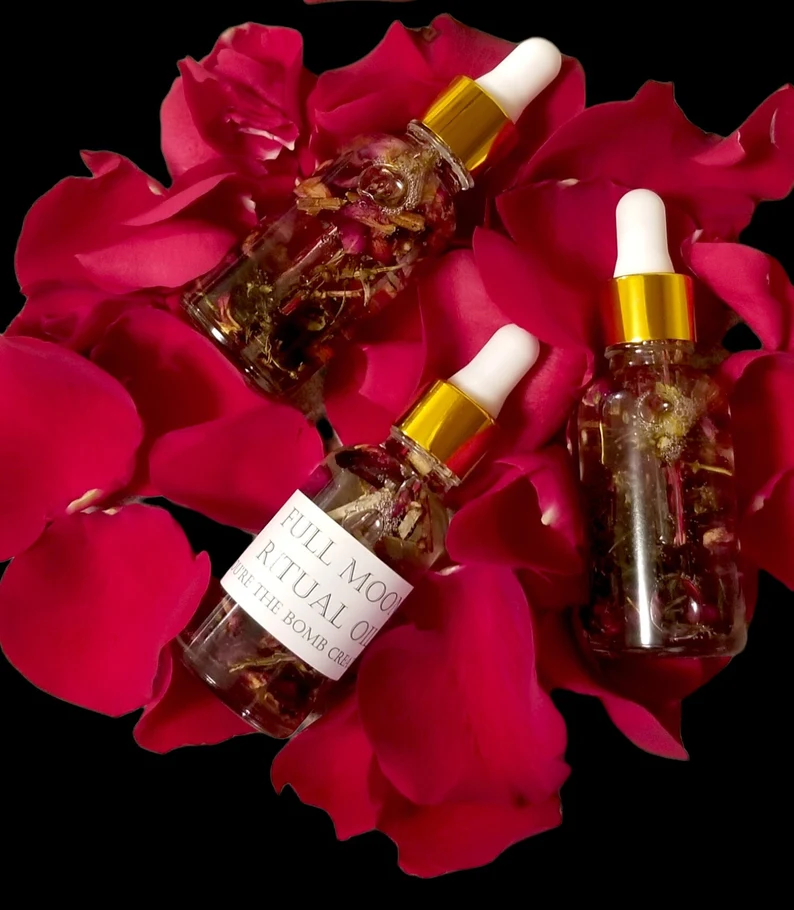
For the people of the Mayan and Aztec empires, as well as the many different smaller tribes and cultures, the moon was almost always associated with womanhood and fertility. The phases of the moon were seen to represent a woman’s life cycle, and the presence of a full moon in the sky was seen to represent a time for sexual passion and procreation.
Like most other fertility deities throughout history, the Mesoamerican moon deities also represented the Earth’s fertility even though there were also fertility goddesses associated with the Earth. The moon was also closely connected to water and rain, as well as with diseases and their remedies.
For all those reasons, the ancient Mesoamerican people had various full moon rituals that had to do with praying and giving offerings as they believed they relied on the moon’s mercy to be bountiful and healthy.
In later periods, the moon goddess Ixchel was seen as the older sister of the Aztec sun god Huitzilopochtli. Ixchel was portrayed as evil and vengeful, however, and she – together with their brothers, the stars – tried to kill Huitzilopochtli and their Earth mother but Huitzilopochtli stopped his siblings.
This is interesting because it’s one of the very few and rare instances where the moon was associated with an evil deity. Even here, however, the moon is still female.
Of course, the moon was celebrated in many other cultures as well, with the motifs in all of them almost always revolving around fertility, rejuvenation, youth, and the cycle of life. So, let’s now take a look at what modern spiritual full moon rituals have emerged from all these ancient religions, and spiritual traditions, as well as from astrology.
8 Popular Full Moon Rituals
Many full moon rituals are inspired by specific religions or millennia-old spiritual traditions. Here’s a look at the more personal types of full moon rituals – the things you can do by yourself at home or outdoors to cleanse yourself of negative energies and recharge your body and spirit with the potent energy of the full moon.
1. Meditation and Cleansing Moon Manifestation Ritual
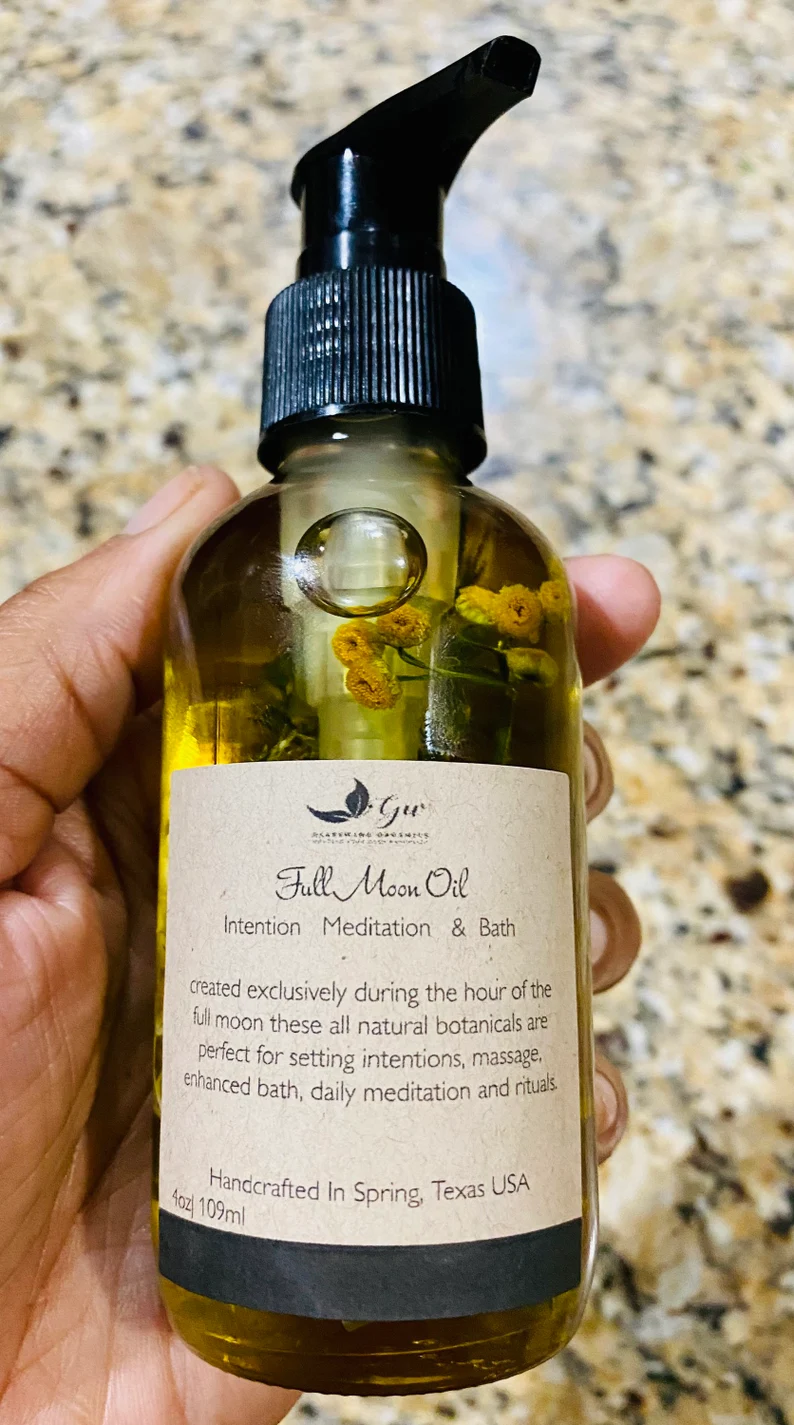
Meditation alone is a great thing to do on a full moon but it’s also important on any other day. For a complete full moon ritual, you can try combining your routine meditation with a moon manifestation. Here’s what you can do:
- Set up a small altar in a positively-charged place somewhere in your home. The altar can be made of any collection of appropriately inspiring objects that are important to you such as books, crystals, a family photo, and so on.
- Sit, relax, and meditate in front of the altar.
- Before getting out of your meditative state, try visualizing the things you want to happen during this incoming waning moon period. Ideally, these will be selfless and pure things that you’d be trying to manifest for those around you and for the world as a whole and not simple materialistic gains for yourself.
2. Charge Your Crystals
If you often use crystals in your day-to-day life, the night of a full moon is one of the best times to charge them. What’s also great is that the process is extremely simple – all you need to do is place the depleted crystals under the direct moonlight of a full moon and leave them there overnight.
Ideally, the crystals will be placed somewhere outdoors so they can fully bask under the light of the moon. Even if you just place them on your bedroom window, however, that should still be more than good enough.
3. Charge Moon Water
While you’re cleansing and charging your crystals, you may also want to charge some moon water. The process is quite similar:
- Fill a large clear glass container with water. Ideally, this would be clean rain or springwater but tap water would do just fine too, especially if you’ve filtered it first.
- Place the glass container in the light of a full moon overnight, right next to your crystals.
- You can also do a quick affirmation meditation and prayer – concentrate on the thing you want to use this moon water for and what you want from it. Maybe it’s for bathing, maybe it’s for healing, or, maybe it’s just for your indoor flower garden.
- Just get your fully-charged moon water jar in the morning and happily use it for whatever you’ve meditated on!
4. Perform a Cleansing, Self-Love Ritual
Practicing self-love is crucial every day of the month but it’s especially potent on the night of a full moon. This type of ritual can take many shapes and forms as it really has only one constant – to spend the night giving yourself happiness, love, and appreciation.
For example, you can do some light yoga or exercise to stretch out your body. You can then have a light healthy dinner, take a bath, and do a quick meditation. The four rituals mentioned below can also be incorporated into a broader and longer night ritual of self-love.
5. Perform a Full Moon Dance Ritual
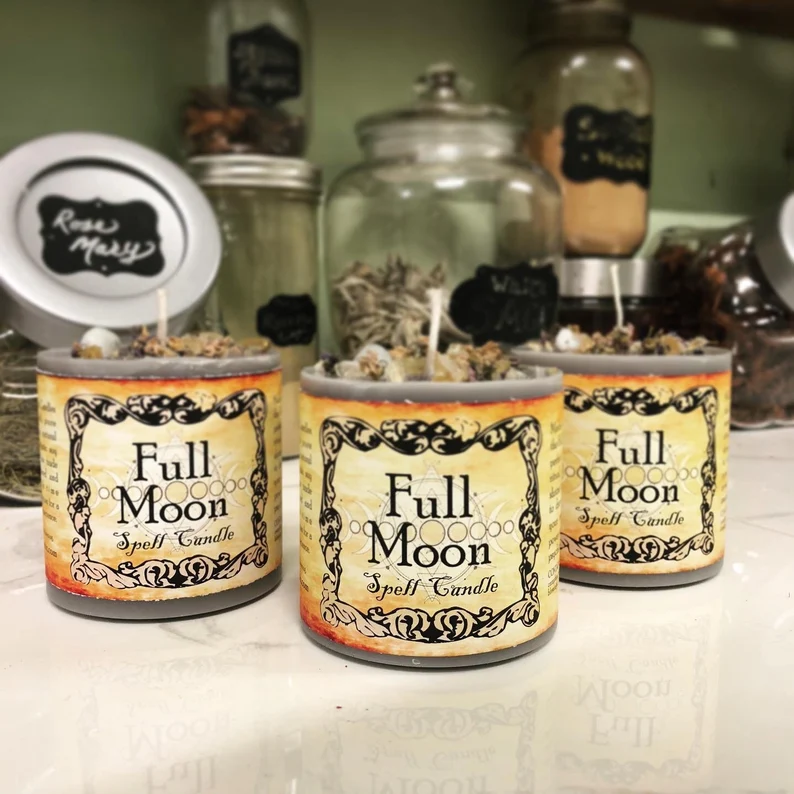
Full moon rituals are all about expending all your pent-up negative energy and filling yourself with enough positive energy to last you through the waning moon period. And few full moon rituals achieve this better than a full moon dance.
Ideally performed outdoors, this dance under the bright moonlight can be done either alone or in a group, however, you would prefer (and is safe). Either way, the goal here is to dance your heart out until all your negative energy, stress, and anxieties have been exorcised from your body.
After that, it’s best to follow up the dance with a good meditation or prayer, a moon bath, a light walk under the moon, or something similar that will help recharge you with the positive energies of the full moon.
6. Go Outside For a Once-a-Month Outdoor Meditation
A long and fulfilling midnight meditation can be especially recharging if it’s done outdoors, in nature, and under the bright light of the full moon.
This type of ritual is often done in groups, in the form of meditation/prayer circles but it can also be done solo if you’re feeling comfortable where you are. You can easily do this in your own backyard if you want to but the effects seem especially strong if you do it in a specific place such as a particularly spiritually-charged hill, forest, mountainside, beach, or another such location in the wilderness.
7. Do a Full Moon Bath
Few things are more relaxing than a nice bath, especially on the night of a full moon. Light some candles of color and scent suitable for your zodiac sign (green for Capricorn, red for Aries, and so on), add some bathing salts and enjoy a full moon bath before going to bed.
Being exposed to direct moonlight would be ideal for this ritual but, if that’s not possible in your bathroom, you can follow the bath with a nice meditation under the light of the full moon on your balcony, for example.
8. Write and Burn a Moon Message
A less-practiced but quite nice full moon ritual is to sit down, ideally after a nice cleansing bath, and write a long letter about something that matters deeply to you.
This could be some sorrow you’ve been clinging to, a hope you have but worry about, a person that’s been on your mind a lot lately, or anything of the sort.
The idea of this message isn’t to be sent to someone you know, however – it’s a message you write to yourself under the full moon’s watchful gaze. So, make sure that the message is as truthful, deep, and introspective as possible.
Once you’ve written it, set up a small altar of candles and incense, and burn the message under the moonlight. Then, just watch the message burn and use that to guide yourself into a peaceful meditation.
Wrapping Up
Full moon rituals have been around for literal ages and continue to be practiced as people see the positive effects of practicing them. Whether you choose to do a simple cleansing midnight meditation, a moon bath, or a moon dance, burn a moon message, or charge your moon water and crystals, you’ll likely start the first morning of the waning moon period fully charged and positive about what’s to come.




